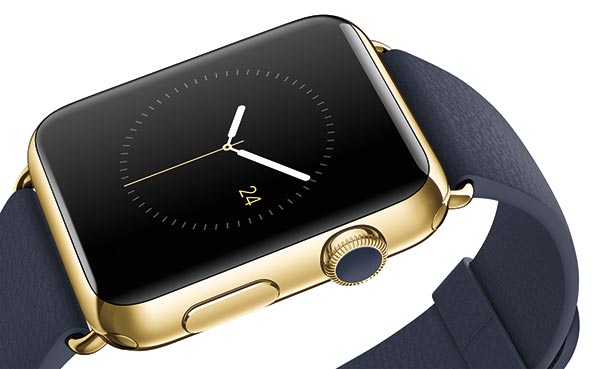Apple held its highly anticipated 'Spring Forward' on Monday. The main focus of the show was, of course, Apple's first wearable, the Apple Watch. While many of its smartphone making rivals have produced smartwatches and smartbands over the months leading up to now, the media in general seems to have felt that it would take Apple's wearable launch to define and to kick-start the industry.

We had previously seen the Apple Watch revealed in September when the iPhone 6 and iPhone 6 Plus were launched. So we knew a lot about the appearance of the device, how it would be sold in 38mm and 42mm sizes and lots of other permutations of watch faces and straps. Yesterday we learnt that these permutations of design and construction are the only differences between the Apple Watch models – for instance there aren't models with more storage or more connectivity options (like the iPhone or iPad range offer). Despite this the Apple Watch can cost anywhere between $349 and $17,000 (£299 to £13,500 in the UK). The entry level price for the larger 42mm model will be $399.

Apple's pricing "demonstrates the confidence it has in the new Apple Watch's functionality, design and consumer appeal," wrote Ian Fogg, Director of Mobile Analysis, IHS Technology in an email to HEXUS. He noted that the Watch's 18 hour battery life means that it won't offer sleep tracking. Like some rival smartwatches it relies upon a paired smartphone (iPhone) in order to be a communication device.
The Apple Watch brings an interesting new UI and way of interacting with a wearable device. The 'Digital Crown' allows users to scroll, zoom and navigate fluidly without obstructing the display and the 'Force Touch' pressure sensitive display brings further interaction options.
Apple describes its new Watch as "an entirely new way to receive information at a glance and interact with the world through third-party apps designed specifically for the wrist". The official Apple Watch web pages focus upon the personal nature of a watch and how it brings both more immediate and more relevant information to the wearer. The tap you get when you receive an instant message and sharing of taps, sketches and even heartbeats is said to bring entirely new ways of communication to wearables.

Fitness features are also highlighted by Apple and like many wearables before it – it provides activity tracking from the smattering of biometric and other sensors it has built-in. Apple's iOS has just been updated to 8.2 with complimentary functionality and basic apps to integrate this health tracking. You will need iOS 8.2 to pair your Watch and iPhone and it will bring along, not just the fitness features but enable Apple Pay using your Watch.
"Apple Watch begins a new chapter in the way we relate to technology and we think our customers are going to love it," said Tim Cook, Apple’s CEO. "We can't wait for people to start wearing Apple Watch to easily access information that matters, to interact with the world, and to live a better day by being more aware of their daily activity than ever before."
From 24th April interested customers will be able to buy an Apple Watch online or by reservation in Apple's retail stores in Australia, Canada, China, France, Germany, Hong Kong, Japan, the UK and the US. Before this time, from 10th April, Apple Stores will have some Watch models available for preview and try-on by appointment.













